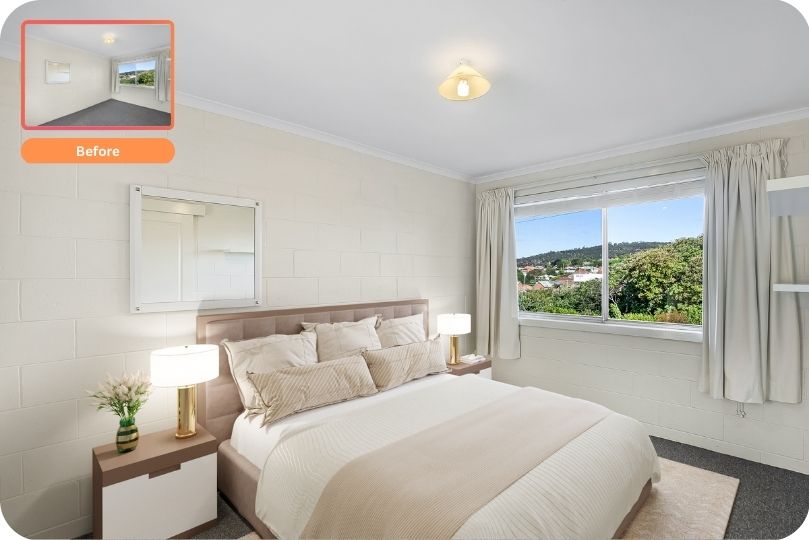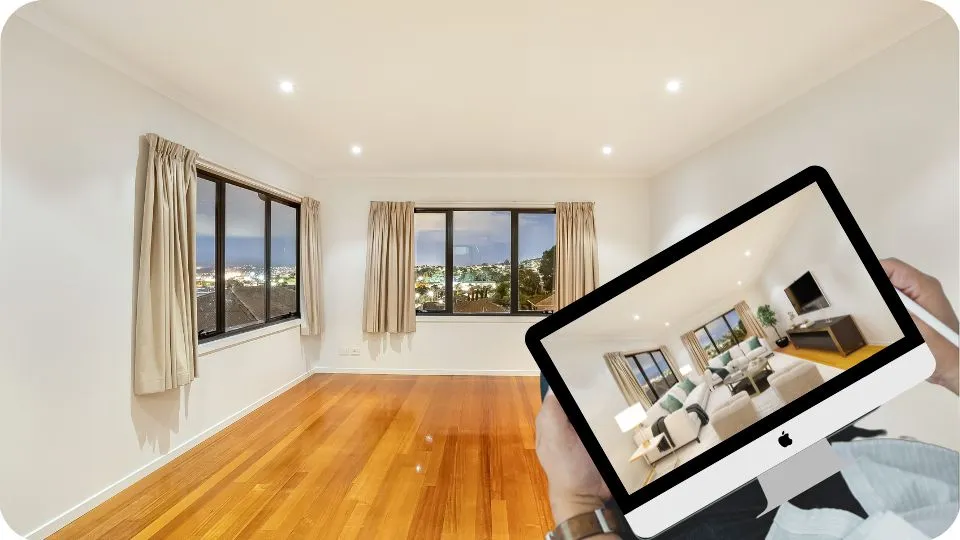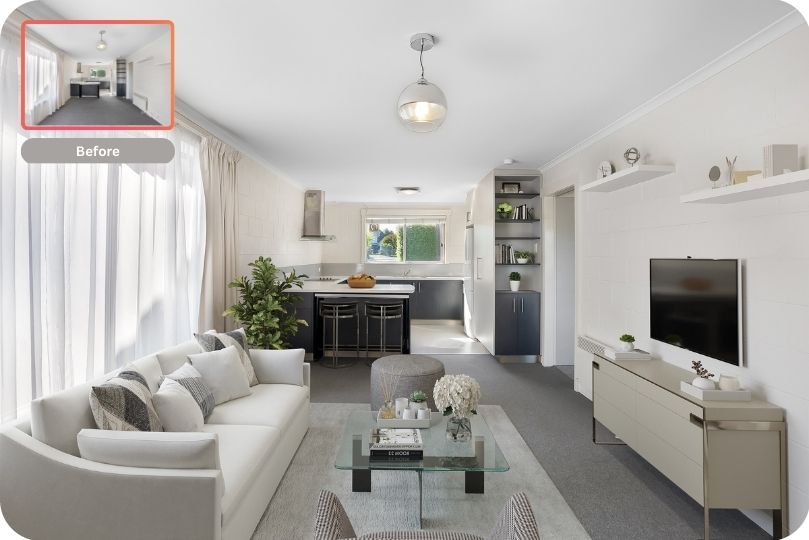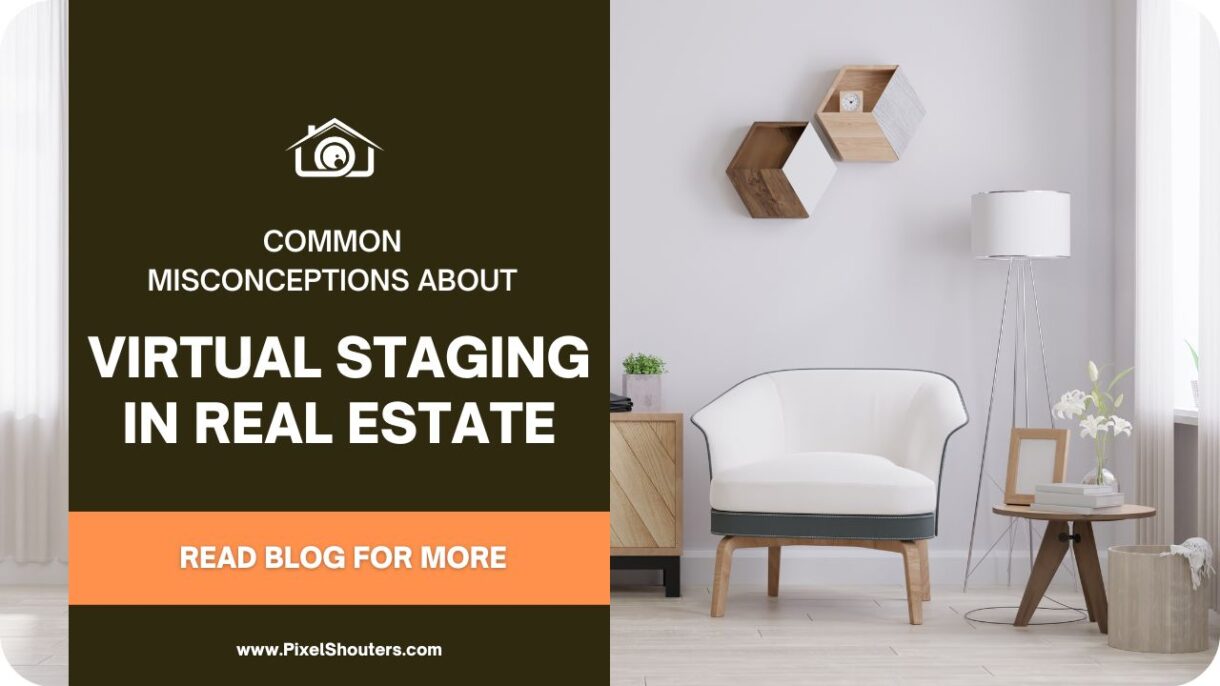Debunking Common Misconceptions about Virtual Staging in Real Estate
Virtual staging is a effective tool which has determined its area in the hastily converting landscape of real estate advertising. This includes using virtual approach to design and enhance spaces so that they can be extra visually attractive to capacity customers. Nevertheless, in spite of its developing recognition, virtual staging in real estate isn’t always freed from fallacies. In this all-inclusive article, we can reveal a number of the most not unusual misconceptions approximately virtual staging in real estate and highlight its proper advantages.
Virtual Staging in Real Estate
The Purpose of Virtual Staging:
Intended use for virtual staging is often misunderstood by people dealing with property on the market. In essence, virtual staging in real estate is a visible resource supposed to help ability buyers see possibilities in a property. It is not more often than not approximately misleading practices but approximately developing narratives that might grip the audience.
I. Misconception 1: One-Size-Fits-All Approach:
A conventional misconception is that virtual staging in real estate follows a one-length-suits-all method, limiting its applicability to specific assets patterns. In fact, virtual staging offers a excessive diploma of customization to in form numerous possibilities and architectural designs.
Virtual staging organizations collaborate intently with real estate dealers and assets owners to understand the purpose demographic and the particular tendencies of every property. This collaboration lets in for the advent of custom designed virtual staging solutions that resonate with the supposed target marketplace, whether or not it’s far a contemporary city condominium, a suburban circle of relatives domestic, or a steeply-priced property.

II. Misconception 2: Misleading Representation:
One not unusual misconception about virtual staging in real estate is that it gives a misleading instance of the assets. Critics argue that through way of virtually improving photos, virtual staging in real estate may additionally gift an unrealistic view of the space. However, it is essential to understand that virtual staging, while done ethically, is meant to beautify the property’s visible appeal without distorting its essential functions.
Virtual staging companies, such as PixelShouters, adhere to ethical guidelines, emphasizing transparency in their approach. It’s essential for real estate professionals to use virtual staging as a supplementary tool, providing an accurate representation of the property alongside staged images. By doing so, they can build trust with potential buyers and manage expectations effectively.
III. Misconception 3: Unrealistic Expectations:
Another common misconception revolves around the belief that virtual staging sets unrealistic expectations for buyers. Skeptics argue that the virtually staged images may create a disparity between expectation and reality once a buyer visits the property in person. While this concern is valid, it underscores the importance of context and accompanying information.
Real estate professionals must recognize virtual staging as a means to showcase the potential of a space, not to deceive buyers. Effective use of virtual staging involves providing additional details about the property, such as its dimensions, features, and any renovations or improvements made. When supported by accurate information, virtual staging becomes a valuable tool for aligning buyer expectations with the real estate.
IV. Misconception 4: High Cost and Complexity:
One of the misconceptions surrounding virtual staging is the belief that it is prohibitively expensive and complex. Critics argue that the costs associated with virtual staging services can outweigh the benefits, and the process itself may be too intricate for widespread adoption. Upon closer scrutiny, a more nuanced reality comes to light.
Virtual staging, when compared to traditional physical staging, often proves to be more cost-effective. The expenses associated with physically renting furniture, hiring movers, and arranging for in-person staging can accumulate rapidly. In contrast, virtual staging allows for significant cost savings while providing flexibility in terms of design changes and updates.
V. Misconception 5: Limited to Empty Spaces:
A prevailing misconception is that virtual staging in real estate is only suitable for empty or unfurnished spaces. While virtual staging is indeed commonly used to showcase vacant properties, its versatility extends far beyond that. Virtual staging can complement existing furniture, offering a solution for properties that are partially furnished or where certain rooms lack visual appeal.
In situations where a property is occupied, virtual staging can strategically highlight the potential of each room, guiding potential buyers’ focus to the property’s strengths. For instance, if a living room is cluttered or features outdated furniture, virtual staging can virtually replace these elements with modern, stylish alternatives, allowing buyers to envision a more aesthetically pleasing living space.

VI. Real Benefits of Virtual Staging:
Amidst the misconceptions, it’s crucial to underscore the tangible benefits that virtual staging brings to the real estate industry. When employed judiciously, virtual staging can significantly impact the speed of a sale and the overall perceived value of a property.
- Faster Sales: Studies have shown that staged homes tend to sell faster than their non-staged counterparts. Virtual staging expedites this process further by eliminating the time constraints associated with physical staging. Properties can be virtually staged within days, providing real estate professionals with a valuable tool to attract potential buyers promptly.
- Enhanced Visual Appeal: Virtual staging allows for creative freedom in presenting a property. By showcasing different design styles and furniture arrangements, virtual staging can cater to a broader audience. This flexibility enhances the visual appeal of a property, making it more appealing to a diverse range of potential buyers.
- Cost-Effective Marketing: Traditional staging can be costly, especially for high-end properties with expansive floor plans. Virtual staging offers a cost-effective alternative that doesn’t compromise on visual impact. Real estate professionals can allocate their marketing budget more efficiently, ensuring a strong online presence through visually stunning, virtually staged images.
VII. Addressing Concerns: Ethical Guidelines in Virtual Staging
Amidst the misconceptions surrounding virtual staging, it is essential to address concerns related to ethics and transparency. Real estate professionals, including those collaborating with PixelShouters, play a pivotal role in ensuring that virtual staging is utilized responsibly.
- Transparency is Key: One of the main ethical considerations in virtual staging is transparency. Real estate listings featuring virtual staging should explicitly communicate that the images are virtually enhanced for illustrative purposes. This disclosure fosters trust between sellers and potential buyers, dispelling any notions of deception.
- Accurate Property Representation: To mitigate the risk of setting unrealistic expectations, it is imperative that virtual staging aligns with the property’s actual condition. PixelShouters and similar companies prioritize accuracy, ensuring that virtually staged images reflect the genuine potential of the space without exaggeration.
- Guidelines for Responsible Use: Real estate professionals should establish internal guidelines for the responsible use of virtual staging. This may include providing a balance of staged and un-staged images, offering detailed property descriptions, and encouraging potential buyers to visit the property in person to experience its actual ambiance.
VIII. Leveraging Technology: The Evolution of Virtual Staging
As technology continues to advance, so does the sophistication of virtual staging techniques. PixelShouters and other industry leaders are leveraging cutting-edge technology to provide even more realistic and immersive virtual staging experiences.
- Virtual Reality (VR) Integration: The integration of virtual reality into virtual staging is transforming how potential buyers experience properties online. VR allows users to virtually “walk through” a virtually staged property, providing a more immersive and interactive viewing experience.
- Augmented Reality (AR) Applications: Mobile apps that use augmented reality are becoming popular tools in the real estate market. Buyers can use these apps to visualize how a property would look with different furnishings and decorations, directly in their real-world surroundings.
- Photorealistic Rendering: Advancements in rendering technology contribute to the creation of highly realistic virtual staging images. Modern techniques result in images that closely resemble professionally photographed, staged rooms, further blurring the line between virtual and physical staging.

Conclusion: Embracing the Future of Real Estate Marketing
In conclusion, dispelling the misconceptions surrounding virtual staging in real estate is crucial for embracing its potential in the dynamic world of real estate marketing. PixelShouters and similar companies are at the forefront of this evolution, offering innovative solutions that go beyond mere image enhancement.
As virtual staging becomes an integral part of the real estate landscape, it is essential for industry professionals to stay informed, adapt to technological advancements, and prioritize transparency in their marketing strategies. By doing so, real estate professionals can harness the power of virtual staging to captivate potential buyers, expedite sales, and showcase properties in their best light.
The future of real estate marketing is undoubtedly intertwined with the evolution of virtual staging, and those who embrace this transformative tool will position themselves as industry leaders in the virtual age.

[…] let’s address the elephant in the room – misconceptions about virtual staging. Some skeptics might think it’s all smoke and mirrors, that what you see isn’t what you […]